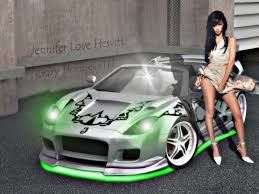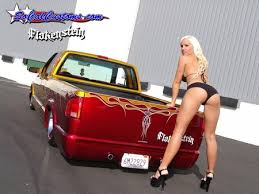




The new Forester has realized ideal proportions that provide ample interior space and offer improved utility without substantially enlarging the body size.
Compared to the previous model, the new Forester is 110 mm taller (excluding the roof rail) and 45 mm wider, and its wheelbase has been expanded by 90 mm, increasing interior space and improving riding comfort. On the other hand, the overall distance between the ends of the right and left door mirrors has been shortened by 10 mm through mirror position and design changes. Also, the minimum turning radius was made shorter by 0.1 meter for zippy handling.
Off-road capability is further improved by optimization of approach and departure angles, coupled with a generous 225-mm ground clearance.
The double-wishbone rear suspension makes room for a deeper and wider luggage compartment. This enhances the utility of this car that already features cargo area tie-down hooks and a DC12V/120W power outlet, as well as a push button switch for folding down the rear seatbacks.
Larger door openings, which are enabled through new sash construction, afford improved ingress and egress, and the rear doors open 75 degrees to allow for better rear seat access.
Through the enhancement of body rigidity, less road noise reaches the interior of the car. All door openings are sealed with double-layered weather stripping placed along the door trim for the optimal pressure to tightly seal the doors and ensure a quieter ride.
The multi-functional center console provides a spacious compartment that can accommodate an A4-size notebook PC and a purse of equivalent size. It also incorporates a removable tray that can be used to hold portable media players and cell phones. The console compartment has a sliding lid that is cushioned on top to serve as an armrest.
A retractable rear tray with a cup holder is installed between the rear seats, further elevating rear passenger comfort. (Available on the 2.0XS and 2.0XT)
Exterior design
Streamlined, yet sculpted styling evokes images of powerful, well defined muscles carved out of stone.
Sharply defined character lines running from the sides of headlights to the tail lights, combined with boxed front fenders and projected rear quarter panels, accentuate a more pronounced SUV profile.
The center of the redesigned front grill is metallic gray in color, making a sharp yet elegant contrast to its chrome-plated contours.
Headlamps are chrome-plated on the inside to project the light outward evenly. Rear lights are clustered and designed to highlight a luminous and translucent look in the rear styling.
17-inch aluminum-alloy wheels with distinctively sculptured spokes emphasize the vehicle's commanding presence and high quality. 16-inch aluminum-alloy wheels also feature sharp lines of spokes, expressing high quality and smartness.
Interior design
Decorative insets with a brushed aluminum-look flow from the center panel of the dashboard to the door trim, adding spaciousness and airiness in the interior and stressing sportiness in the cockpit. Rich and refined interior design is accentuated by the center panel, which combines wood and metal finishes, as well as by the door trim, embellished with metal-finish panels for window and door switches.
The vehicle information display, which constantly shows outside temperature, average mileage and time on the digital clock, as well as a navigation screen and audio display, are placed nearer the top of the dashboard for improved visibility and functionality.
The front seat cushions employ highly resilient urethane materials that effectively absorb vibration during a drive. In addition, newly developed seatback springs firmly support the driver's hips and back to maintain the optimal driving position.
Drivetrain
An expanded ground clearance further improves the off-road capability of the vehicle. The raising of the clearance does not alter the low center of gravity that is attained by mounting the engine low in the vehicle, thereby securing outstanding vehicle stability.
4-speed AT models are equipped with the Sportshift gear selection. By optimizing the final gear ratio and torque convertor characteristics, as well as through reducing friction among part assemblies, driving performance and fuel economy has been improved. The N Control System on AT models automatically shifts the transmission back to neutral from driving positions after the brake pedal is depressed for some time. Gear shift operation has also been enhanced by the redesigned shift lever positions and the use of roller bearings.
The SI-Dive (Subaru Intelligent Drive) system on the 2.0XT model offers three different modes of driving for the driver to enjoy: Intelligent; Sport; and Sport Sharp.
Gear ratios on MT models, from the second through the five-speed, as well as the final drive gear ratio, have been modified to improve driving performance and fuel economy. Reducing friction inside the transmission also contributes to better gear shift operation on MT models.
The Active Torque Split AWD system is mounted on AT models. MT models come with the center differential AWD system with viscous LSD (limited slip differential). Both AWD systems distribute optimal power to the wheels with the firm grip and traction, providing unrivalled vehicle stability.
The Vehicle Dynamics Control (VDC) is standards on all models. Fed by information gathered by sensors that monitor vehicle and road conditions, the VDC coordinates the engine, transmission, and brakes in order to recover the vehicle's position should unstable movements occur on a slippery road.
2.0-L DOHC engines on the 2.0X and 2.0XS
Fuel economy has been improved with the redesigned DOHC cylinder head, as well as through optimization of the compression ratio and reduction of the volume of the combustion chamber.
Low-end and mid-range torque is improved, while better fuel economy and lower gas emissions are achieved, primarily through design changes in the engine that generate a stronger tumble gas flow and raise gas intake efficiency.
The use of AVCS contributes to higher power output, while fuel economy is also achieved by improving combustion efficiency through the optimized timing of valve openings and closings.
A design change in the cooling water channel around the spark plug further prevents engine knocking and also helps improve low-end and mid-range torque output.
With the optimization of the diameter and length of the intake manifold, and the adoption of the equal length/constant pulsation independent exhaust system, the engine's intake and exhaust performance has been elevated.
Two catalytic convertors have been placed in tandem. The layout enables the convertors to quickly heat up, which facilitates catalytic activation during engine startup and improves on emission reduction efficiency.
The twin mufflers expand the muffler capacity, bringing noise levels down even lower and reducing exhaust back pressure.
2.0-L DOHC Turbo engine
A newly developed DOHC cylinder head is used in this engine. The intake port and the combustion chamber have been redesigned to reduce residual gasses, thus raising combustion efficiency.
By using a resin-based intake manifold, the inner walls of the manifold are smooth and less resistant to the intake flow. The weight is also reduced by 30% compared to the earlier manifold.
A design change in the cooling water channel around the spark plug further prevents engine knocking and also helps improve low-end and mid-range torque output.
The injector nozzle has been redesigned to atomize fuel and finely disperse it into the combustion chamber for improved combustion. This also helps reduce harmful substances in emissions.
Also adopted is a secondary air system that forces air into the exhaust port to burn out any gasoline remaining in it. The system helps eliminate harmful substances when the powertrain is still cool, and it promotes early activation of catalytic converters.
The twin mufflers expand the muffler capacity, bringing noise levels down even lower and reducing exhaust back pressure.
Powered by regular gasoline, the 2.0-L naturally aspirated Boxer engine features better combustion efficiency, as well as eco-friendly performance and fuel economy, thanks to a newly designed DOHC cylinder head and the use of the active valve control system (AVCS).























































